From the depth of Bankura comes a different breed of entrepreneurs. They know that they are skilled in making fresh jaggery which is a hot seller in the cold winter. Having discovered that Patamda has many palm trees, they were able to bring along their team of tappers.
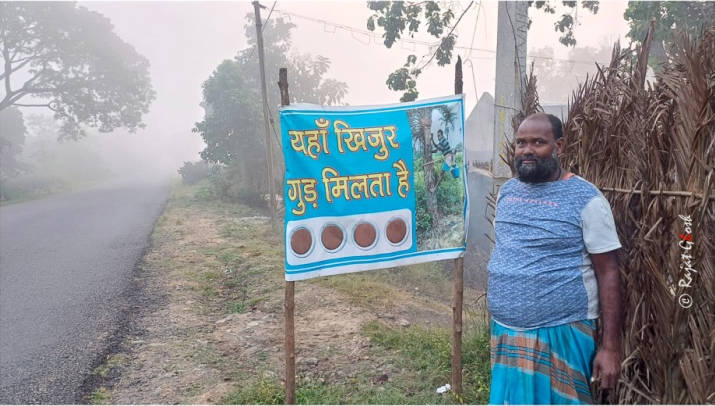
The Tree
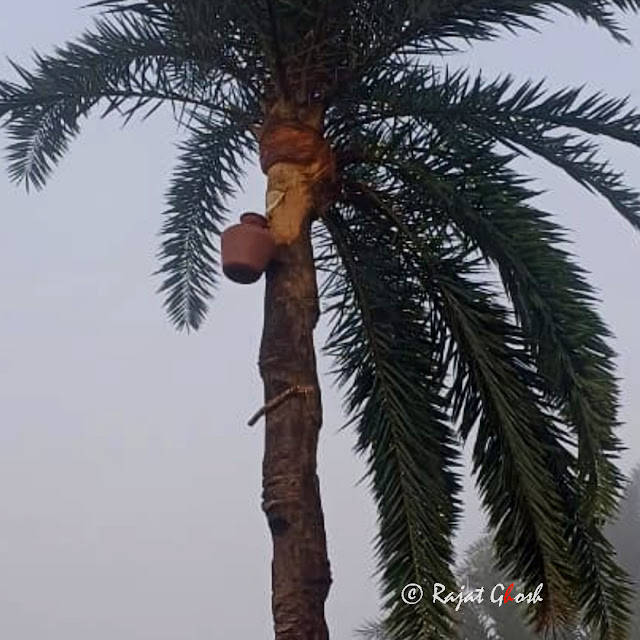 These are date palm trees, very different from the fruit available in the Middle East. The fruit is small and typical to this region, but the juice is sweet and ideal for processing.
These are date palm trees, very different from the fruit available in the Middle East. The fruit is small and typical to this region, but the juice is sweet and ideal for processing.
The Tapper
These are professional climbers of trees, but they are also skilled in giving that part of the tree the right cut with a V shape to allow the white juice to flow into the attached jar tied underneath.
Jaggery
There are several teams placed in Patamda. The team consists of the toddy tapper, the supervisor, the toddy collector and the person who tends to the fire. A lot of sensitivity to the environment is observed, namely – they use the fallen palm from the tree for fire. They build a temporary hut constructed by bending twigs and covered with plastic roofing and topped with branches. This is the resting house during the day.
The Process
Early in the morning the experienced toddy tapper climbs the tree, unties the jar that has collected the liquid overnight and puts it into yellow 20 litre plastic jars.
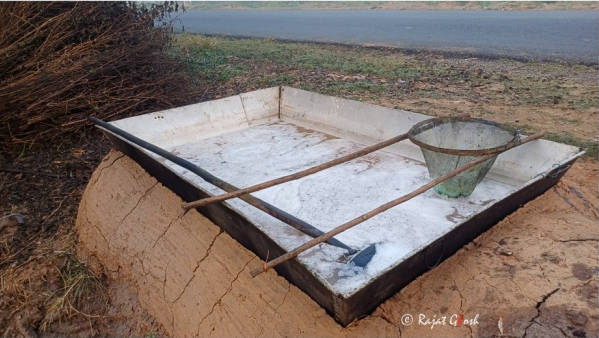
They balance two jars on either end of a stick to make it easier to carry. This arrives at the processing place by about 6:30 in the morning and is poured into flat trays which are place over a fire.
They then start the process by lighting the fire below when this tray is full of this unfermented liquid.
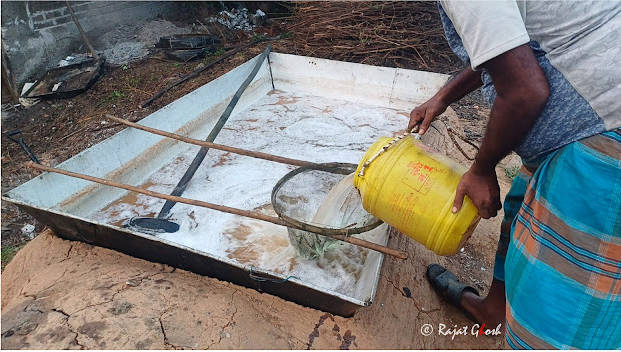
There are two additives that we discovered. The first is ‘chuna’ – a type of limestone to arrest the fermentation of the sweet liquid into toddy and retaining its sweetness instead. The second discovery is after the boiling and the thickening take place, they add cane sugar to the semi liquid to increase its weight. So it is true that there is a type of adulteration that takes place.
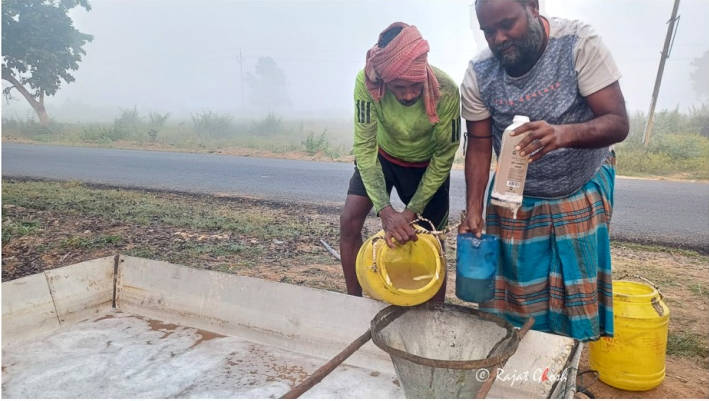
Overall
So the end product is in three parts – liquid, semi-solid and solid.
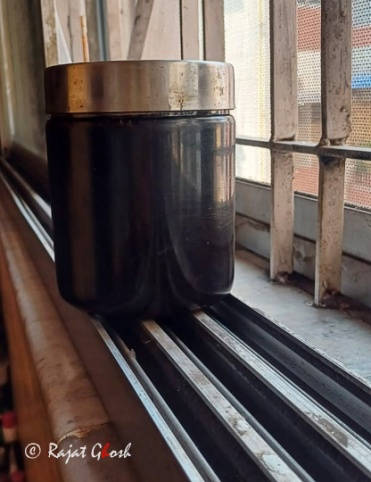 Entrepreneurship
Entrepreneurship
There is a lesson beyond ‘gur’ making that we learnt.
- Mobility
The Gur makers had a skill but they found that in the local village namely Bankura there were not enough palm trees. They found this available in Patamda. - Flexibility and skill to be accepted in a new environment
The skill of this village entrepreneur was to form a team and move in. Realising they had to be accepted by the local tribals, we assume they worked out a win-win situation since there was no conflict and the locals were happy that this natural resource was being economically used. . - Awareness
Manufacturing of Gur on a busy highway and just a sign ensured a level of interest and probably purchase. However, the manufacturers actually took their stock to the wholesale market of Sakchi, Jamshedpur, to ensure that there is a turnover of working capital. - We also discovered that the old belief that ‘nolen gur’is available only in the colder months of December and January is not true. So this started pre Durga Puja.
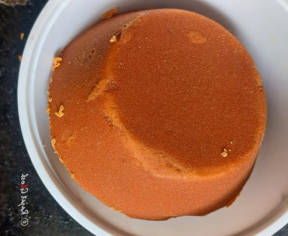 Action
Action
- We should form a team and send representatives to watch the making of jaggery from the beginning to ensure that sugar is not added and with the assurance that we will pay a higher price.
- Having a representative will assure a lot of close friends that we are getting the pure product and also helping and encouraging a local entrepreneur who, after this season, goes on to some other idea.
Pricing
Rs. 120/kg
Please take a container for the solid product and a wide-mouthed bottle/jar for the liquid.
I had an empty bottle and was lucky to get 2 litres of the date palm juice.
Photo credits: Rajat Ghosh
